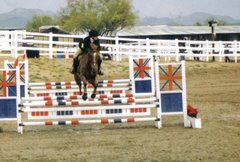Unit Two Lab, Metabolic Rates
In this Lab I am going to see in real life how the cardiovascular and respiratory systems respond to three different activities. I will be measuring pulse (beats per minute), respiration (breaths per minute) and blood pressure (systolic/diastolic). I will have a baseline set of vitals to compare with the vitals after three different activities.Pulse can be felt in a few different places: coratid arteries, brachial arteries, radial arteries, femoral arteries, and pedal dorsalis arteries. The most common place to take a pulse is the radial artery. Pulse is equal to heart rate. When you feel the pulse this is the left ventricle contracting and forcing its oxygenated blood out into the arteries, to travel through the arterioles, down to the capillaries where the exchange occurs, then to the venules, veins and back to the heart.
The systolic blood pressure is when the blood is ejected from the heart and the diastolic is during relaxation of the ventricles. By the time the blood has reached the capillaries, the pressure is decreased due to the increase in number of vessels it is flowing through. After the exchange, when blood is in the venules in veins, the respiratory pump helps to assist moving the blood back towards the heart. This works because when we inhale, the chest expands and pressure in the thoracic cavity is reduced. This allows the blood to flow from a higher pressure(abdominal cavity), to the lower pressure (thoracic). Valves prevent backward flow when we exhale, keeping the blood moving in the right direction. Blood pressure an essential element that allows the exchange to occur at the capillary level. The exchange must occur and blood continue to circulate in order for all of cells to be able to receive O2 and nutrients and get rid of CO2, and wastes. Blood pressure is measured in mmHg.
Respiration is the number of breaths you take in a minute. As discussed above, respiration serves to oxygenate and expel CO2 from the lungs and also contributes to the circulation of blood.

Hypothesis:
Materials and Methods:
To measure Pulse, I took it at the radial artery on myself and counted for 30 seconds then multiplied by two to get pulse rate. Respirations were counted for 30 seconds and then multiplied by two to get the rate. Blood pressure was taken with an electric blood pressure cuff that my parents had for keeping track of their blood pressures at home. I chose to measure respirations and pulse for 30 seconds instead of 15, because I think this is more accurate. Vitals were taken immediately after each exercise. Blood pressure first, and I was able to do respirations at the same time, and then pulse right after.
Data:







Analysis: My hypothesis for activity one was correct, except for diastolic BP which actually decreased. My hypothesis for activity two was correct, except for diastolic BP which actually decreased. My hypothesis for activity three was only correct in the aspect of pulse. However, I hypothesized respiration and BP diastolic would stay the same and they were increased by one breath, and decreased by one point respectively, so I was very close. In conclusion, it seems my hypothesis' were mostly accurate, with the exception being diastolic blood pressure.
Problems: Something that could have had an influence on the readings is the blood pressure cuff I used. I do not know how long ago it was calibrated, or it's accuracy compared to other blood pressure cuffs. Also, when you count your own respirations, the data can be skewed because you are thinking about it.
Conclusion: In conclusion, I would have to say that any activities where you are up and moving around in any way increase the metabolic rates we focused on, with the exception of diastolic BP, which tends to decrease in small increments. Pulse, Respiration,and Systolic BP all increase with activity because your muscles and tissues are having to work harder, so they need more oxygen, and need to have the blood circulated faster to make the exchanges needed for the cells to continue their work. If circulation pace picks, up then the left ventricle is going to have to pick up the pace and effort when pumping the blood out of the heart. Diastolic pressure could decrease because there is less time for the ventricles to relax.
Works Cited
Mader, Sylvia. Human Biology 10th ed.
Note-- My digital camera was not cooperating to upload pictures of me doing the actual activities. When I can figure out the problem, I will post these pictures.

No comments:
Post a Comment